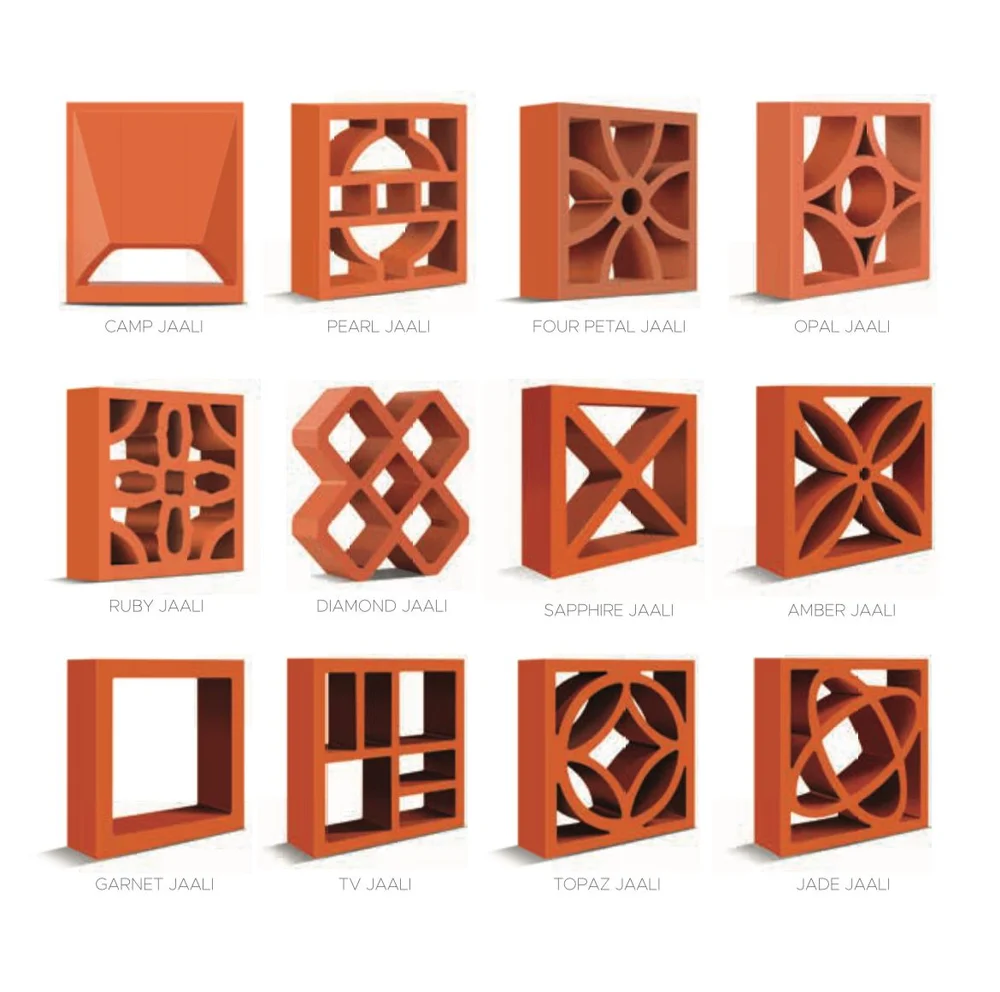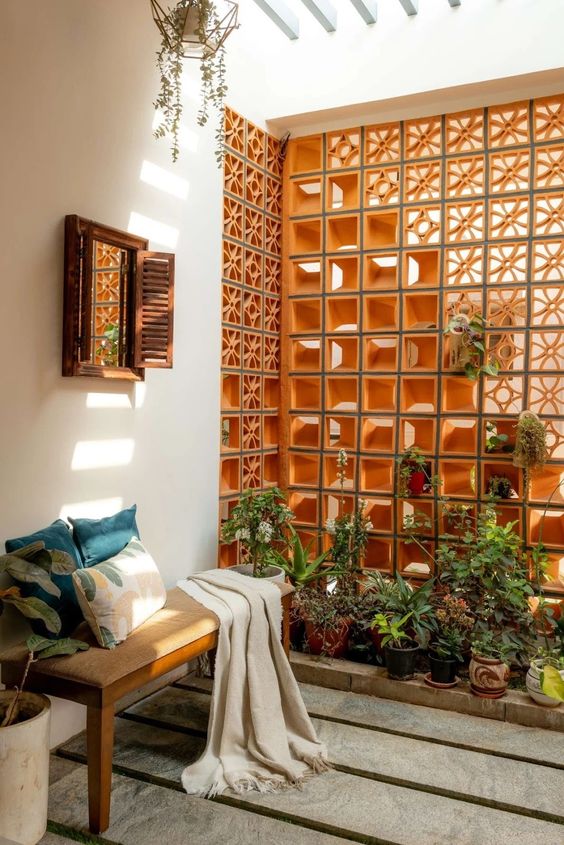Terracotta Jali has been a staple in architecture for centuries, blending tradition with modern design effortlessly. With its aesthetic charm, natural cooling properties, and versatility, it’s no wonder terracotta jali is a favorite among architects and interior designers. In this post, we’ll explore the top 5 terracotta jali patterns that work beautifully in both contemporary and classic interiors.

1. Geometric Patterns: Modern Simplicity
Geometric designs are a go-to for contemporary interiors. Their clean lines and symmetrical shapes provide a sleek, modern appeal while still embracing the natural, earthy tones of terracotta.
Best for:
- Room dividers in minimalist homes
- Facades for modern office buildings
2. Floral Motifs: Timeless Elegance
Inspired by nature, floral patterns exude a classic charm, making them ideal for traditional interiors. The intricate craftsmanship highlights the artistry behind terracotta jali, offering a perfect balance of beauty and functionality.
Best for:
- Decorative wall panels in living rooms
- Traditional balconies
3. Islamic-Inspired Designs: Intricate and Regal
Mughal and Islamic patterns feature intricate details, showcasing craftsmanship at its finest. These designs are perfect for creating a grand and luxurious feel, often associated with classic architecture.
Best for:
- Window screens in heritage-style homes
- Prayer rooms or meditation spaces
4. Abstract Patterns: Artistic Flair
For a bold and creative touch, abstract patterns are an excellent choice. These unconventional designs work well in contemporary interiors, adding an artistic statement to any space.
Best for:
- Feature walls in modern cafes
- Highlighting spaces with accent lighting
5. Traditional Lattice: Heritage Charm
The traditional lattice pattern is a timeless favorite, ideal for blending old-world charm with modern functionality. This versatile design fits seamlessly into both classic and contemporary interiors.
Best for:
- Staircase railings
- Outdoor pergolas
How to Choose the Right Pattern for Your Space
- Consider the Interior Theme: Opt for geometric or abstract designs for modern spaces, and floral or Islamic patterns for classic interiors.
- Size of the Jali: Larger perforations are better for ventilation, while intricate designs add detail and privacy.
- Customization: Work with a designer to create a pattern that matches your style and space requirements.
Interior Partitions and Screens
Within interiors, terracotta jalis are used as partitions or decorative screens to create semi-private spaces while maintaining a sense of openness. These perforated screens are ideal for dividing areas without blocking light or obstructing airflow, making them popular in modern open-plan designs. Jalis can be used in offices, restaurants, or even residential homes, where they allow for flexible space management.

Terracotta jalis add a tactile, warm element to interiors, contrasting with more modern materials like glass and steel. The natural clay material provides a connection to nature, offering a sense of warmth and comfort.
Sustainable Architecture
In a world where sustainability is a growing concern, terracotta jali is prized for its eco-friendly attributes. Terracotta is a natural, non-toxic material that is readily available in many parts of the world, and its production has a relatively low environmental impact compared to more industrial materials.
One of the main sustainable benefits of terracotta jali is its contribution to passive cooling. In hot climates, the perforated screens allow air to flow through the building, reducing the need for air conditioning. The jali diffuses sunlight, minimizing heat gain and preventing interiors from overheating. This reduces energy consumption, making the building more efficient and environmentally responsible.
The breathability of terracotta also helps regulate humidity levels inside the building, contributing to a more comfortable living or working environment without the need for artificial climate control systems. This makes terracotta jali a popular choice in green building design, where architects aim to reduce the carbon footprint of their projects.
Customization and Design Flexibility
Modern manufacturing techniques allow for greater customization of terracotta jali designs. While traditional jalis were often handcrafted, today’s designs can be produced with advanced techniques like 3D modeling and CNC cutting, enabling precise and intricate patterns that suit contemporary tastes.
Architects and designers can create custom jali patterns to fit the unique needs of a project, whether they want to evoke traditional motifs or design something entirely new. The flexibility in design allows for creative experimentation with both form and function. Jalis can be adapted to various architectural styles, from minimalistic to ornate, depending on the desired aesthetic.
Standard Size and Price of Terracotta Jali
| Standard Size | Rs/Piece |
|---|---|
| 8x8x2.5 Inches | 110/Piece |
Packing Availability
| SIZE | MATERIAL | PACKING PER BOX | WEIGHT / Pcs |
|---|---|---|---|
| 8x8x2.5 Inches | Red Clay | 4 Pcs | 2.6 kg (Approx) |
